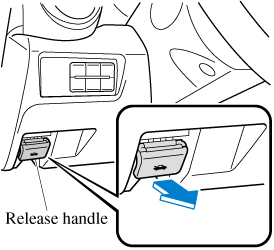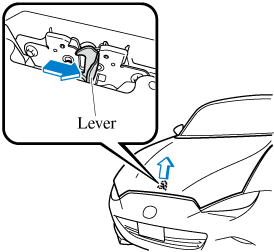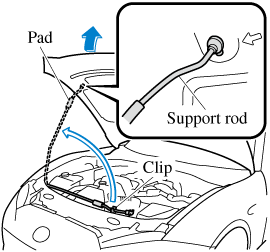Opening the Bonnet
(With active bonnet)
Do not pull the bonnet's release handle after the active bonnet has activated:
Pulling the release handle while the active bonnet is operating is dangerous as it will raise the bonnet further and obstruct vision. In addition, the bonnet cannot be lowered manually, therefore do not attempt to forcefully push the bonnet back down. Otherwise, it could deform the bonnet or cause injury. If the active bonnet has activated, always consult an expert repairer, we recommend an Authorised Mazda Repairer.


-
With the vehicle parked, pull the release handle to unlock the bonnet.

-
Insert your hand into the bonnet opening, slide the latch lever to the right, and lift up the bonnet.

-
Grasp the support rod in the padded area and secure it in the support rod hole indicated by the arrow to hold the bonnet open.



 Read this first
Read this first



















